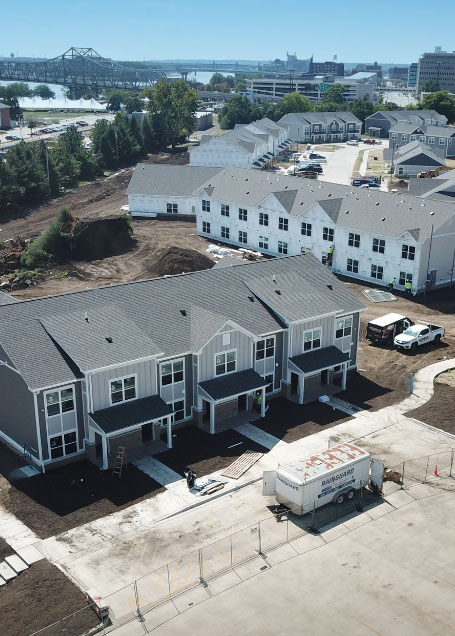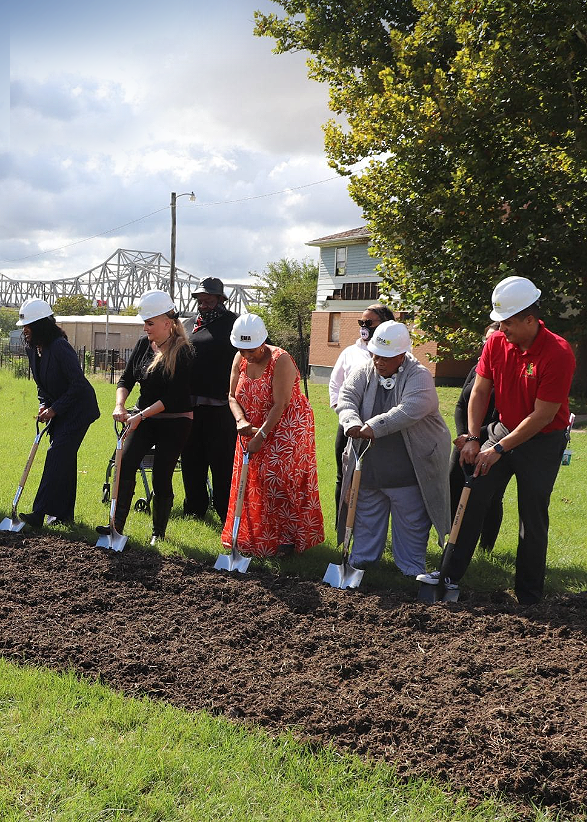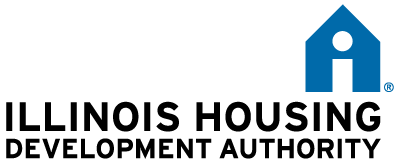Multifamily Financing
As the supply of affordable apartments has continued to decline across the country, many Illinoisans are finding limited rental options in the State’s increasingly crowded rental markets. An estimated 451,700 Illinois renters were spending more than half their income on rent and utilities by the start of 2022.[i],[ii] Furthermore, rising materials costs and tightening financing conditions make it difficult for developers of affordable housing to keep up with the increased demand. But despite these challenges, IHDA’s multifamily financing programs made great strides to create and preserve affordable rental developments that improved quality of life for residents and transformed entire neighborhoods across the state.
In 2022 and 2023, IHDA closed on $1.4 billion in multifamily lending and awarded state and federal housing tax credits worth another $1.1 billion in equity to finance the construction and rehabilitation of 8,707 affordable rental units for families, seniors, and persons with special needs. These transactions were supplemented by $765.1 million in leveraged financing for a total investment of more than $3.2 billion for affordable housing development in Illinois.
Transforming communities can only happen with intentional strategies to guide that funding to the places where it is needed most. To achieve this, IHDA aligned the state’s housing investments with broader objectives related to health, sustainability, racial equity, and more in several ways. As a part of the Authority’s ongoing efforts to support equity and inclusion within the real estate industry, IHDA implemented several changes and incentives within its application processes to make them more accessible to small- and mid-size development firms, ensuring a diverse range of developers have access to state funding. IHDA also designed a new capacity building program throughout 2022 and 2023 that aims to reduce the systemic barriers emerging developers often face when competing for state and federal resources. To address critical gaps in housing accessibility, IHDA continued to prioritize funding for developments that cater to special needs populations, including persons experiencing homelessness, those with disabilities, and justice-involved individuals.
Finally, recognizing the benefits of improved housing quality through energy efficient building materials and operations, IHDA emphasized sustainability in its investments, encouraging developments to achieve green building certifications and incorporate sustainable design practices in every stage of the development process.
TERMINOLOGY
Housing in which the occupant is paying no more than 30 percent of gross income for housing costs.
A household is cost burdened when it spends more than 30% of its income on rent and utilities and severely cost burdened when it spends more than 50% of its income on these expenses.
The midpoint of a region’s income distribution – half of families in a region earn more than the median and half earn less.
IHDA Financing: $1,395,310,904
Units Created or Preserved: 8,707
Together, these policy shifts not only facilitated the creation of healthier, more sustainable communities but also advanced racial equity in key ways by addressing systemic disparities in access to housing and development opportunities.
In tandem with these policy priorities, IHDA continued to introduce new data tools and resources that allow for a better understanding of on-the-ground needs and opportunities throughout Illinois. IHDA was one of the first Housing Finance Agencies in the country to create formal policies that encouraged the creation of new units in “opportunity areas,” or places near jobs and other resources that support economic mobility. IHDA built on and improved this model over the past two years and in 2022 introduced the Quality of Life Index, a new tool that brings awareness to the details that make communities strong and where they can improve the quality of life for their residents. By focusing on community attributes that enhance health, prosperity, connectivity and more, this tool helps IHDA and its partners gain a comprehensive understanding of a community’s assets and how a development can enhance the neighborhood’s overall economic and environmental sustainability. This information is then used to inform the Authority’s financing decisions, allowing IHDA to prioritize investments in areas with the greatest need and potential for positive impact.
“Having transitioned from the Taft Homes to Providence Pointe, I now have a safe and modern home that inspires joy and happiness, located in a state-of-the-art and security protected community. I am truly blessed to have been a part of this change.”
Lofts on the Square, Belleville
The year 2022 saw the completion of the Lofts on the Square, a redevelopment of a historic hotel into an affordable rental community for seniors adjacent to downtown Belleville. Originally built in 1931, the six-story Art Deco building had fallen into severe disrepair over the years and the city had planned to demolish the structure. However, when the Southwestern Illinois Development Authority and Bywater Development proposed the rehab of the building into senior housing with ground-floor retail space, the blighted building became an opportunity to further local economic development plans. Funded by tax credit equity and federal HOME funds awarded by IHDA, the renovated Lofts on the Square now features 47 one- and two-bedroom apartments for seniors earning less than $42,240 annually as well as common areas, activity spaces, and 3,000 square feet of retail space on the street-level currently occupied by a locally-owned art studio and event space. Beyond adding to the local affordable housing stock in an area with a rapidly growing demand for senior housing, the redevelopment effort was a key piece of several community revitalization efforts underway in Belleville to address a range of revitalization goals related to housing, economic development, transportation, culture, and tourism.
[1] Joint Center for Housing Studies: Low-Cost Rentals Have Decreased in Every State
[1]Joint Center for Housing Studies: Amerca’s Rental Housing 2024, Table W-13


Providence Pointe, Peoria
Also among the IHDA transformations of the past two years was the redevelopment of the Taft Homes, a former public housing property in Peoria. Originally built in 1952 as temporary housing for veterans returning from the Korean War, the 226-unit property on the Illinois River had struggled to provide quality housing as the decades passed. By the 2000s, the cost needed to address the needed repairs far exceeded the price to redevelop the site entirely. The site was leveled in October 2021, and after more than two years of development led by the Peoria Housing Authority and Bear Development, the first families moved into new units of affordable housing where the Taft Homes had previously stood.
Renamed Providence Pointe, the new development replaced the barracks-style buildings that had stood for nearly 70 years with a new neighborhood of modern townhouses and duplexes containing 142 affordable units for families earning less than 60 percent of the Area Median Income, or no more than $48,780 for a household of three. The new development also provides high quality amenities, a community recreation center, a playground, and plenty of green space. The work was supported by $28.1 million in IHDA financing as well as state and federal tax credits worth an additional $24.9 million. For one long-time Taft Homes resident, the impact of this work goes beyond a better quality of life for their family. “Having transitioned from the Taft Homes to Providence Pointe, I now have a safe and modern home that inspires joy and happiness, located in a state-of-the-art and security protected community. I am truly blessed to have been a part of this change.”
